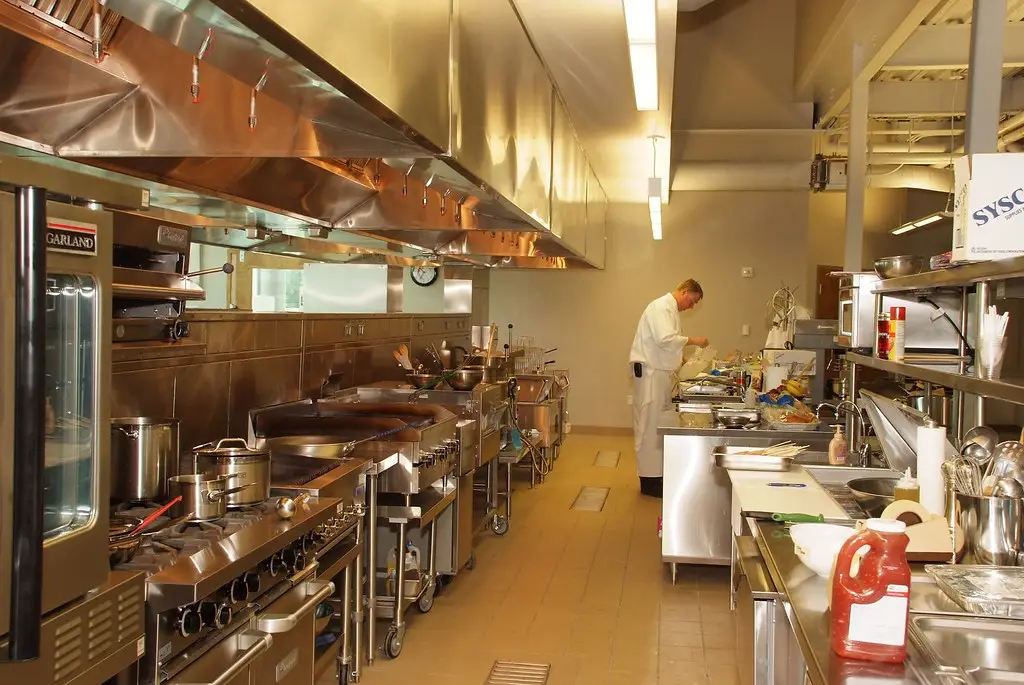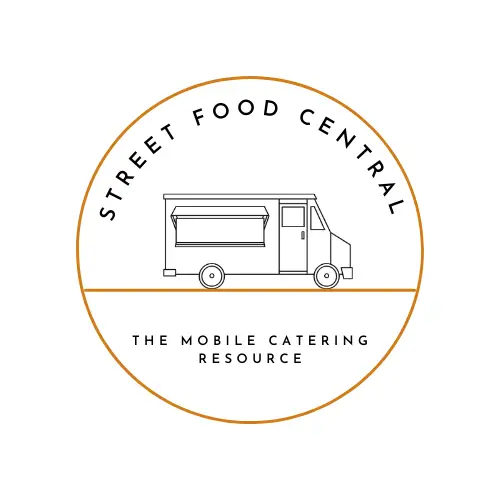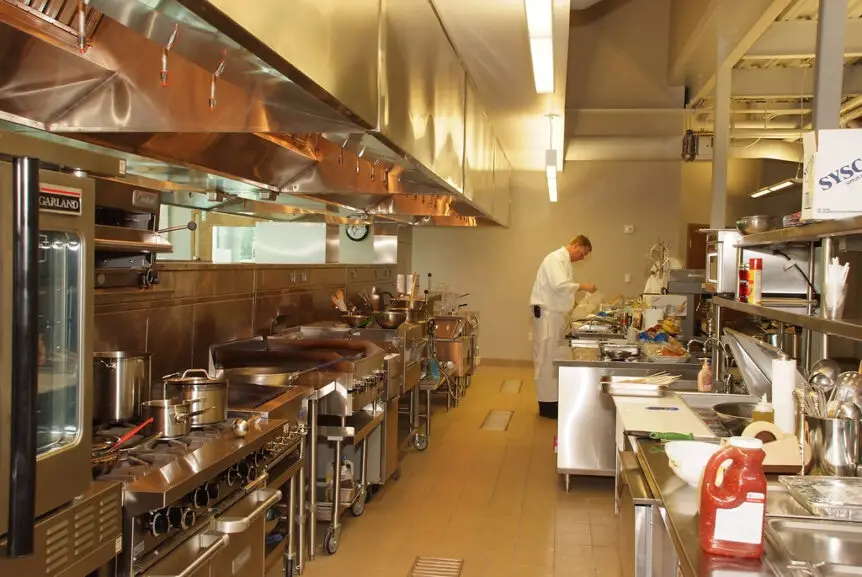Check out this step-by-step guide on how to start a ghost kitchen from home

The commercial food market has been going through a number of shifts in recent years to meet consumer demand and structural shifts as a result of the COVID-19 pandemic of 2020. After this finished and the dust settled, the takeout food industry was in a much better location than it had ever been.
One of the changes is an increase in online delivery, which has given rise to what is known as “Ghost kitchens” or “Virtual kitchens”. This type of commercial food business sells food through third-party food delivery apps such as Deliveroo & Uber Eats as opposed to having a customer-facing food outlet.
This way of doing business has also made it easier for people to start their own ghost kitchens not only in commercial kitchens but also from home, by cutting costs and generally lowering the barrier to entry.
So if you landed on this article and want to know how to start a ghost kitchen from home read on for a step-by-step guide.
What is a ghost kitchen?
A ghost kitchen, also known as a “Virtual Kitchen”, “Dark Kitchen” or “Cloud Kitchen” are remote commercial kitchens that operate online and sells to the public through food delivery apps such as Uber Eats, Deliveroo, and Just Eat, as opposed to public-facing food outlets.
Ghost or Virtual kitchens have been growing in popularity in recent years, especially since the Covid pandemic of 2020 when businesses and individuals alike have had to adapt to the challenges of lockdowns. According to Statista the global market size of ghost kitchens in 2019 was valued at over $40 billion, which, CNBC states could increase to a $1 trillion global market by 2030. As you can see, to go from $40 billion to $1 trillion within 10 years is simply incredible.
The Pros and cons of ghost kitchens
Like any type of business venture, there are numerous pros and cons to ghost kitchens as a business model.
Pros
Low start-up costs
Ghost kitchens don’t have the additional costs that come with physical food outlets, such as signage, interior design fittings etc. Even for relatively low start-up ventures like food trucks, you still need to buy the catering unit you operate from.
All you really need is a large domestic or commercial kitchen, storage space, and the right cooking equipment for a food delivery operation.
Lower operating costs
This applies especially if you start a ghost kitchen from home because you don’t need to pay the high running costs associated with customer-facing food outlets such as rents or utility bills.
Moreover, if you are running your ghost kitchen delivery service from home you don’t even need to pay the rent on pop-up commercial kitchens.
Existing infrastructure
When you sell through third-party food delivery apps such as Deliveroo or Uber Eats you are tapping into their existing ecosystem with thousands of people ordering each day. This means you don’t have to spend time or money marketing to reach new customers.
Third parties deal with the delivery
In addition to having a ready-made client base, third-party apps also have the capacity to fulfill orders, which means you can just focus on creating good food without the headache of logistics.
Quick & inexpensive way to test a concept
Starting a ghost kitchen from home is a relatively quick and inexpensive business model, which means it’s easy to test a new food concept without all the risks associated with starting a physical food outlet.
This also means because you don’t need so much equipment you can quickly get up and running, making those deliveries.
Cons
Paying a commission
When you sell food through third-party delivery apps, like Uber Eats or Deliveroo you have to pay a commission which will eat into your profits. Commission for selling and handling the deliveries ranges from 14% per order, plus a fixed 50p for Just Eats to around 20-25% commission for Deliveroo.
Not in control of customer data
Third-party food delivery platforms deal with all the orders and have control of the customer-generated data. It’s therefore, harder for businesses that sell on these platforms to gain insights and make business decisions based on consumer behaviour.
Hard to build customer rapport
Not having access to customer data also makes it harder to connect with them through things like email marketing, thus making it hard to build rapport.
Competition
Unlike a high street where there are a handful of other food outlets, businesses that operate through third-party apps will be competing with hundreds of other food businesses in one place.
This can make it harder to stand out, especially if you are new, or if you sell a type of cuisine that many other companies are already doing.
Can you operate a ghost kitchen from home?
UK
According to the Food Standards Agency, you can start a ghost kitchen from home as long as you register as a food business; register as self-employed; have the correct food training and certification, and keep a record of all the suppliers that provide you with any food ingredients.
There are a few more things that are required which we will go into in more detail in the next section.
USA
As you would expect, opening a ghost kitchen from home in the USA is state-dependent. You must get the correct licensing as well as paying a registration fee. This can cost as little as $50+$25, or as much as $50+$500 depending on where you live.
Once again, depending on which state you live in, there may be other paperwork to fill out which can bring the total of starting a home ghost kitchen to around $1000.
How to start a ghost kitchen from home
Step 1 – Choose a niche
First up you want to decide what food you want to sell. Try and choose a particular niche and stick to it, as this will help with your brand identity.
You also want to strike a balance between a food niche that has not been overdone (think pizzas and burgers) but not too obscure that people don’t really know what you are selling.
Related articles:
- 7 Most Profitable Food Truck Items
- 28 Food Truck Menu Ideas 2023
- Best Packaging For Hot Food Delivery
Step 2 – Market research
Another part of the process when choosing what food you want to sell is market research.
There are a number of ways to find out food trends including subscribing to statistical websites to access the data and keeping an eye on food outlets & food trucks to see which ones are popular and what new types of foods are coming to market.
For example, Vietnamese food, which I would argue has been underserved previously is now becoming a popular cuisine in the UK.
Step 3 – Optimise for delivery
Remember, ghost kitchens are all about food delivery so It’s also a good idea to pick food that can easily be cooked in bulk and delivered. Dishes like curries and rice can be cooked in big pans and kept at the correct serving temperature which makes the timing of delivery easier than cooking chips and burgers.
Step 4 – Business name & Branding
Once you have chosen your niche, you now have a concept which means it needs a business name and branding to convey what you are about to your customers.
Try and choose a business name that has the food you sell in the name and is three words or less (think V’s Vietnamese).
Related article:
- How To Name Your Food Truck
- Best Packaging For Hot Food Delivery
- What Food Has The Highest Profit Margin?
Step 5 – Equipment
The type of food you sell will dictate what equipment you need, so once you’ve decided on your niche you can start buying catering equipment.
If you want to keep costs low I recommend buying second-hand. There are a number of websites such as eBay and Gumtree, in addition to Facebook groups that have a wide range of second-hand catering equipment.
Related article:
Step 6 – Storage and space
When starting a ghost kitchen from home space may be limited which means you need to make sure you have enough room for the catering equipment and surface area to prepare and package the food.
You also need adequate refrigeration and storage space for your stock and packaging. If you don’t have enough space at home you can adopt a hybrid model whereby you have a separate storage facility for stock and you do the cooking at home or vice versa. Pop-up commercial kitchens can be rented for as little as £20 per hour.
Step 7 – Packaging
You need to choose packaging that is suitable for hot food delivery that provides heat insulation and regulates temperature.
You also want to make sure you go for packaging made from sustainable sources such as compostable or biodegradable containers
Related article:
Step 8 – Operating Legally
Before you start serving food to the public you need to make sure you have the right insurance, training, and certificates in place.
The Food Standards Agency has put together a very useful guide on what you need to start a ghost kitchen from home legally.
Here is a summary:
- Register as a food business – This should be done 28 days before opening
- Register as self-employed – Notify HMRC of the change in your employment status
- Permission to trade from home – Get permission from mortgage provider or landlord to sell food from home
- Risk assessment – Document the risks associated with your businesses (burns, trip hazards etc)
- HACCP – Document the process of buying, storing, cooking, and transporting foodstuffs
- Food hygiene training – Whilst not compulsory it’s suggested to get relevant food hygiene training
- Allergen management – Handle and manage food allergens effectively in food preparation and provide allergen information to your customers
- Traceability – Keep a record of the supplier you source food from
Related article:
Step 9 – Choosing a digital platform
Finally, you need to decide which food delivery platform you want to sell through. As previously mentioned the amount each company charges will differ so you will have to factor this into your operating costs.
However, cost shouldn’t be the only consideration as some of these apps have better marketing and are better known which means whilst they may charge more they have a larger customer base.
Key takeaways
The shift towards online food delivery shows no signs of slowing down, which means ghost kitchens will likely become more of a feature of this industry.
On balance, the pros of starting a ghost kitchen from home outweigh the cons. It’s a relatively low-cost venture to start in terms of the initial financial outlay and you can test your food concept quickly.
You also have access to a large ready-made customer base on food delivery apps that deal with all the logistics of getting the food from your kitchen to the customer.
A few things to bear in mind, however, is as delivery apps become more popular so will the number of other food outlets on them, which might make it harder to find a niche. The commission you pay can also be relatively high on some platforms.
Gavin D is the founder of Street Food Central and Tru Foo Juice Bar Co. and has worked in the mobile catering industry for over 7 years.

